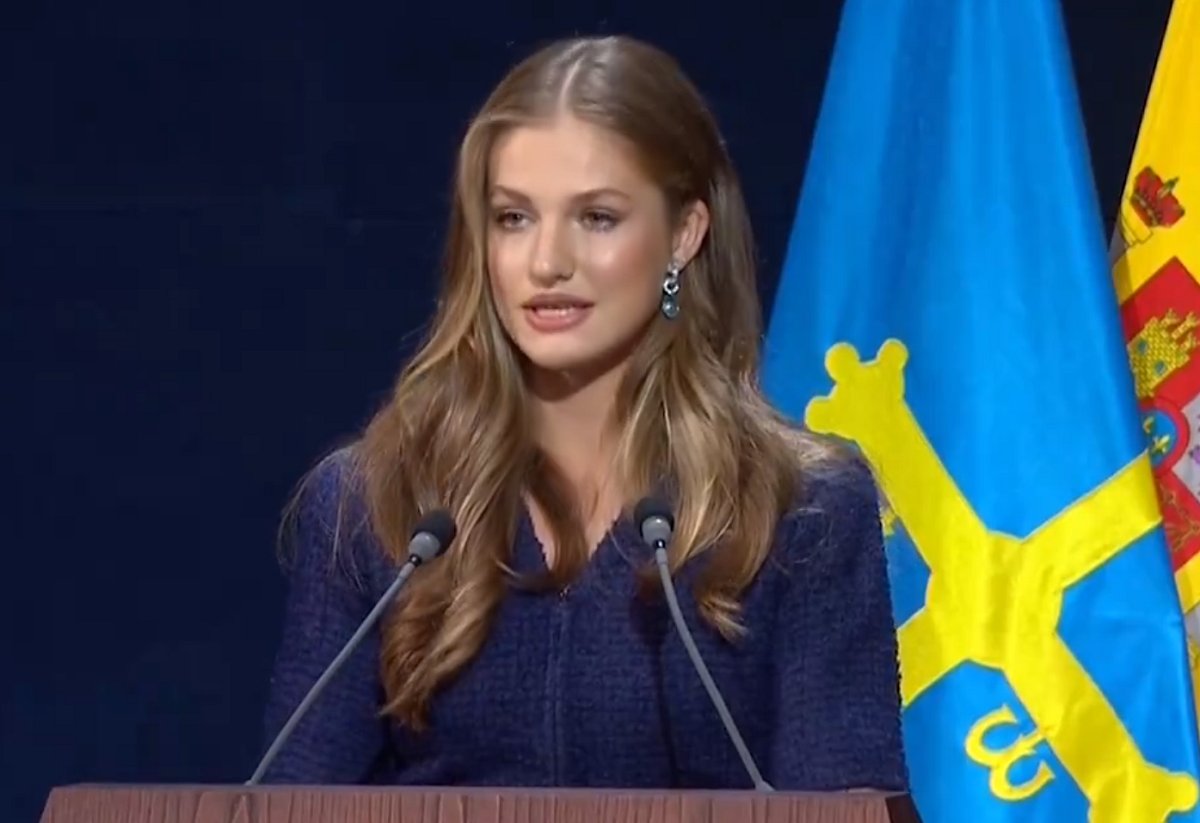
Tomorrow, the heir to the Spanish throne celebrates her eighteenth birthday. The young Princess of Asturias will officially be of an age to attend gala events, wearing tiaras and glittering jewels. Which tiara will she choose for her tiara debut in the future? I’ve got a pretty good guess—one that links Leonor with four generations of royal women who came before her.
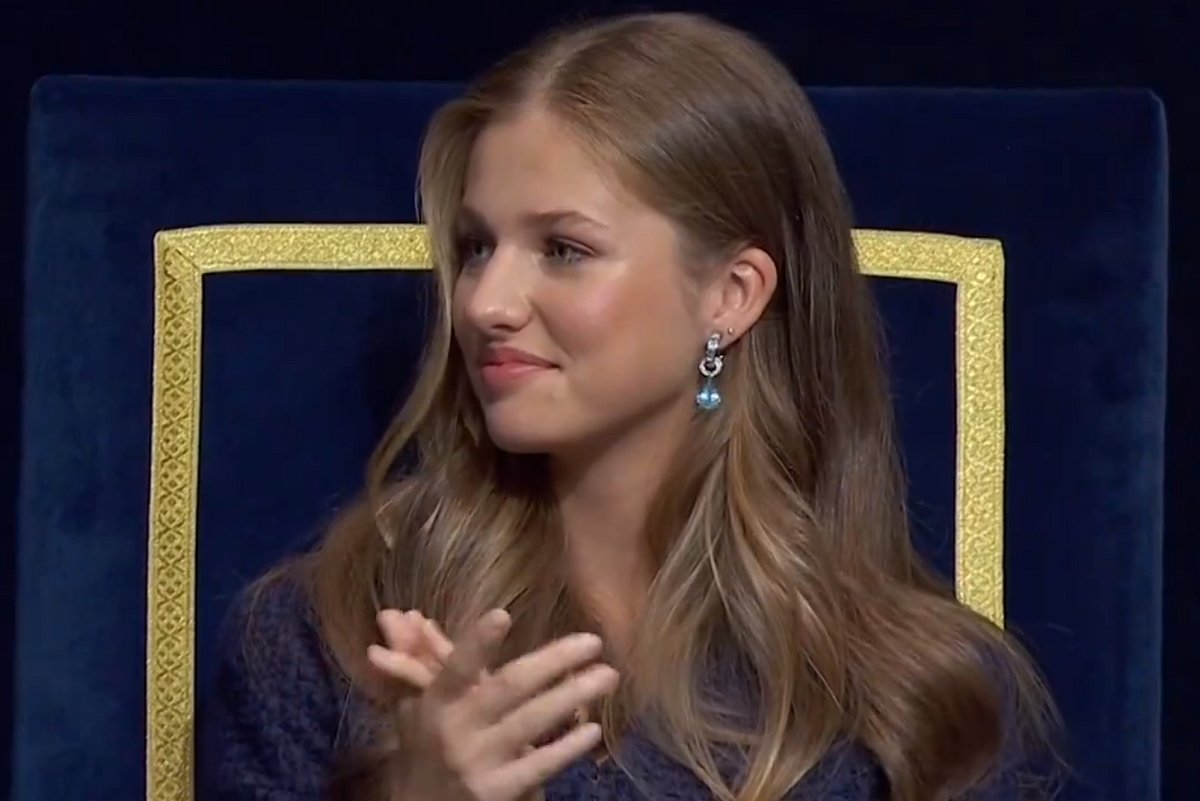
On Tuesday, the Princess of Asturias, the elder daughter of King Felipe VI and Queen Letizia of Spain, turns eighteen. In recent years, we’ve already begun to see her take some careful steps into the world of royal jewelry, including a fantastic appearance in her mother’s Bulgari aquamarines at last week’s Princess of Asturias Awards ceremony.
We don’t know when Leonor’s first gala moment will take place, but now that she’s eligible to attend banquets and wear tiaras, it’s time to speculate here about that future debut! In my mind, there’s only one tiara that fits the bill for such an important moment: a classic diamond jewel that has been worn by Leonor’s royal ancestors for generations.
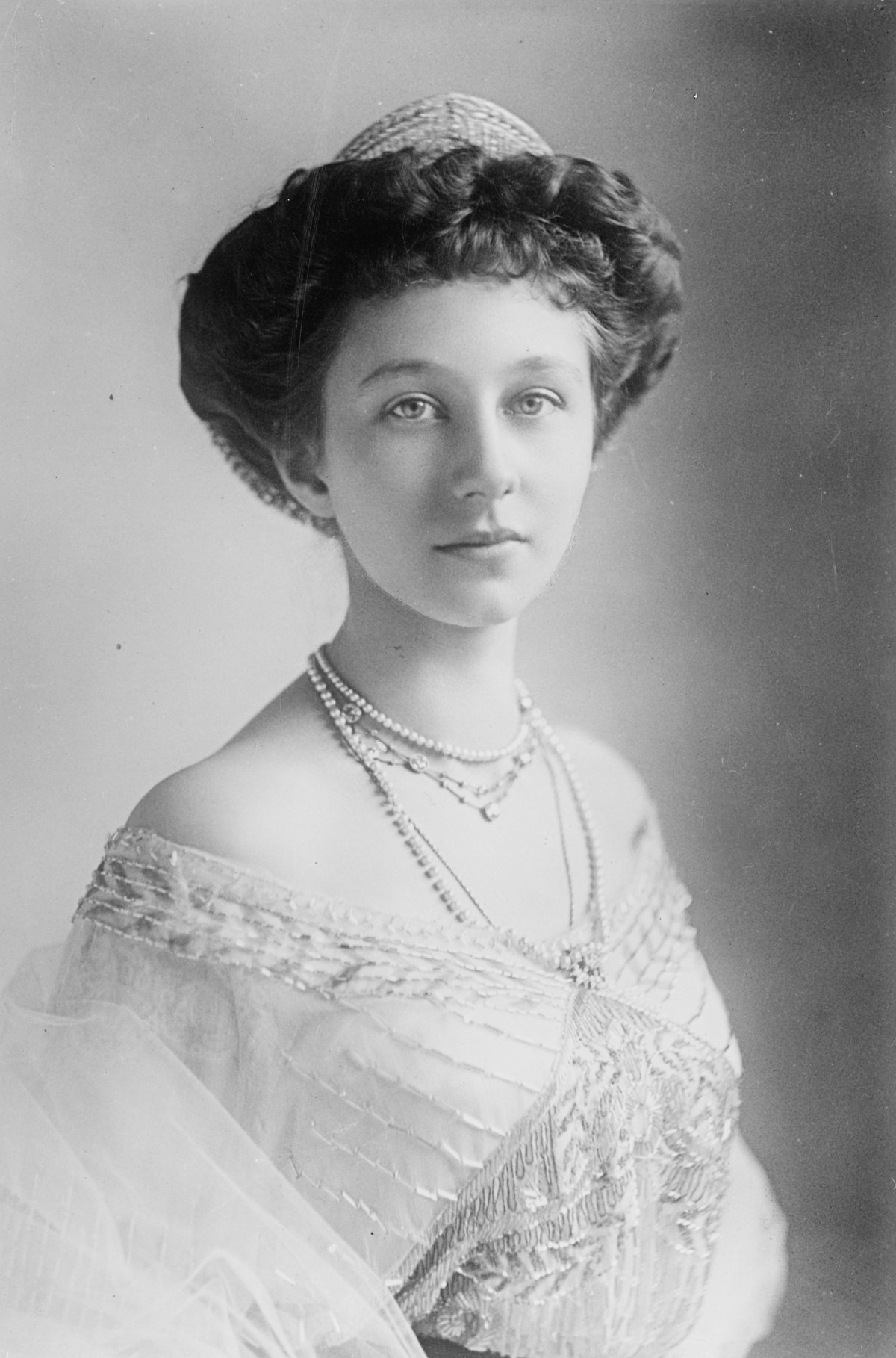
To tell the story of the diamond tiara, we need to look back to the years just before the wars, in the twilight of the Edwardian era. Before he became the enemy of many across Europe, Kaiser Wilhelm II of Germany was just another head of state and grandchild of Queen Victoria. Wilhelm and his wife, Dona, had six sons before finally welcoming a daughter in 1892. The baby girl, named Viktoria Luise in honor of her great-grandmother, Queen Victoria, and her great-great-grandmother, Queen Louise of Prussia, became her father’s favorite child.
Princess Viktoria Luise spent most of her childhood in Germany, naturally, but she did occasionally visit her royal relatives in England. In May 1911, she traveled with her parents to London to attend the unveiling of the memorial to her great-grandmother, Queen Victoria, in front of Buckingham Palace. During the week-long visit, the eighteen-year-old princess joined the rest of the royals for a glittering gala performance at the Theatre Royal, Drury Lane. Tiaras were worn for the occasion, and the Daily Telegraph reported that Viktoria Luise wore “a single small diamond ornament” in her hair, secured with a pale blue ribbon.
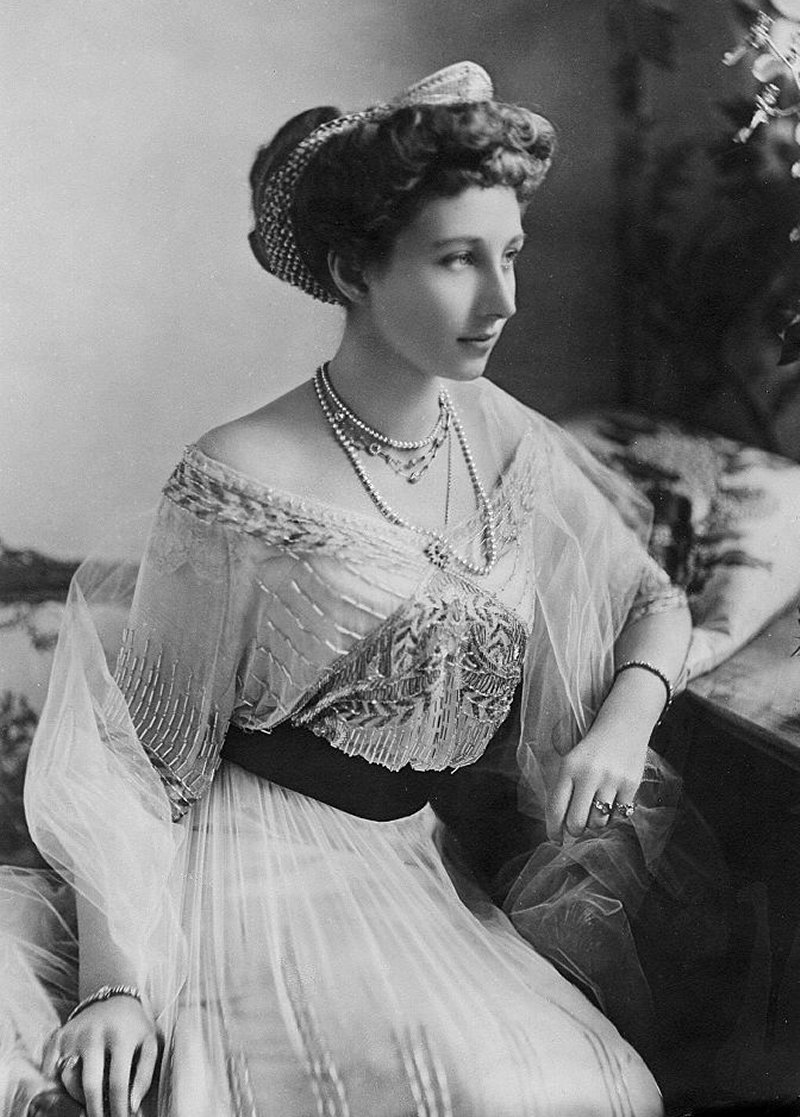
That ornament was almost certainly this petite diamond kokoshnik tiara. The jewel, made by the German court jeweler, Koch, is a small diamond and platinum kokoshnik. A band of laurel leaves crowns the top of the tiara, resting on a set of gem-set columns and a meander base. In the center of the tiara, a pear-shaped double diamond cluster pendant is suspended from a single round stone. Because it was first worn by a Prussian princess, it’s often simply called the Prussian Tiara.
Princess Viktoria Luise wore the tiara at least twice more during the visit: once when she posed for a series of portraits at the studio of the British photographer Keturah Anne Collings, and again for a state ball held at Buckingham Palace. Newspapers reported that the princess wore pink for the ball, with “a tiny diadem of brilliants” in her hair.
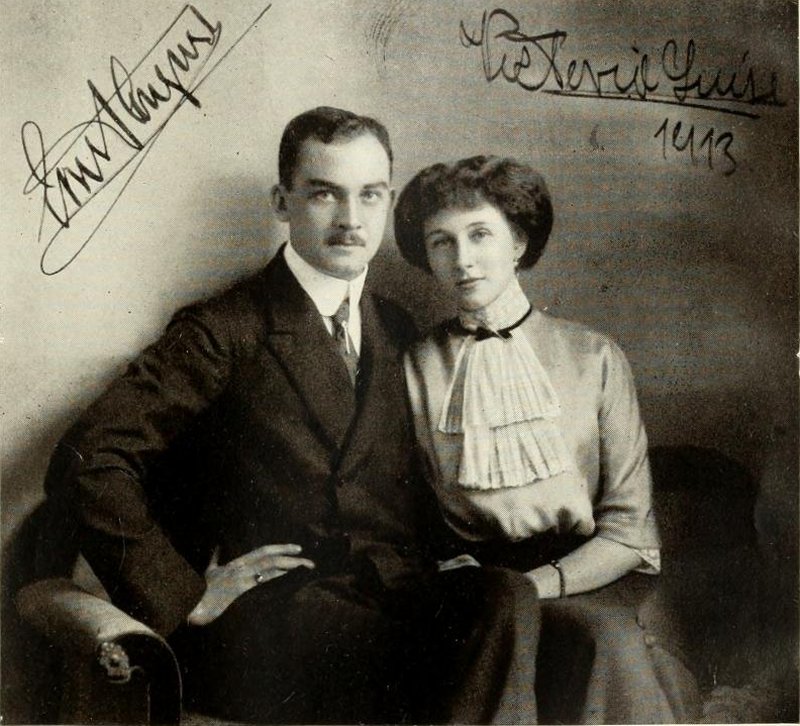
The photographs taken at the Collings studio during the 1911 visit to England became particularly useful two years later, when Princess Viktoria Luise’s engagement to Prince Ernst August of Hanover was officially announced. The marriage united two branches of the larger German royal family that had been at odds for decades. In the spring of 1912, Viktoria Luise had met Ernst August when he traveled to Potsdam to personally thank her father for sending condolences after the death of his elder brother, Prince Georg Wilhelm. (Georg Wilhelm had been driving to Copenhagen to attend the funeral of his uncle, King Frederik VIII of Denmark, when he was killed in an accident.)
The gesture led to a thawing of relations between the Hanoverians and the Hohenzollerns, who had been enemies since the Kaiser’s grandfather had knocked the King of Hanover off his throne during the Austro-Prussian War of 1866. Prince Ernst August’s visit marked the first time that a member of the Hanoverian family had made an appearance at the Prussian court since the war. While newspapers were busily reporting rumors that Princess Victoria Louise might marry a British cousin, the Prince of Wales, she was actually falling in love with Prince Ernst August. Their romance, which culminated in a glittering royal wedding in May 1913, brought on further German royal reconciliation.

Ernst August and Viktoria Luise’s wedding was one of the last great royal gatherings held before the outbreak of World War I. As the couple’s family grew, with five children born in ten years, their relationship with their royal cousins was divided by the ongoing conflict. They lost their British titles in 1917, and a year later, they lost their remaining German royal titles as well. Viktoria Luise’s parents were exiled to the Netherlands, and Ernst August’s parents passed away in 1923 and 1933.
Now the head of the House of Hanover, Prince Ernst August and his bride continued to move in royal circles. Their only daughter, Princess Friederike, was considered as a potential wife by various royal suitors. Among them was Prince Paul of Greece. Paul and Friederike were related twice over, both descendants of Kaiser Friedrich III of Germany and of King Christian IX of Denmark. Friederike had become close to Paul’s sisters, Princess Helen and Princess Irene, while attending school in Italy. With their encouragement, Paul proposed to Friederike in the summer of 1936, during a visit to Berlin to attend the opening ceremony of the Summer Olympics.

Friederike accepted Paul’s proposal, but the official announcement of their engagement was delayed by a year because of ongoing political upheaval in Greece. When their engagement portraits were eventually taken, Princess Friederike wore her mother’s petite diamond kokoshnik tiara in the pictures. Viktoria Luise offered the tiara to her daughter as a present, and Friederike took it with to Athens to begin her new life as a member of the Greek royal family. You can read much more about the couple’s royal wedding in my extensive article on the topic.
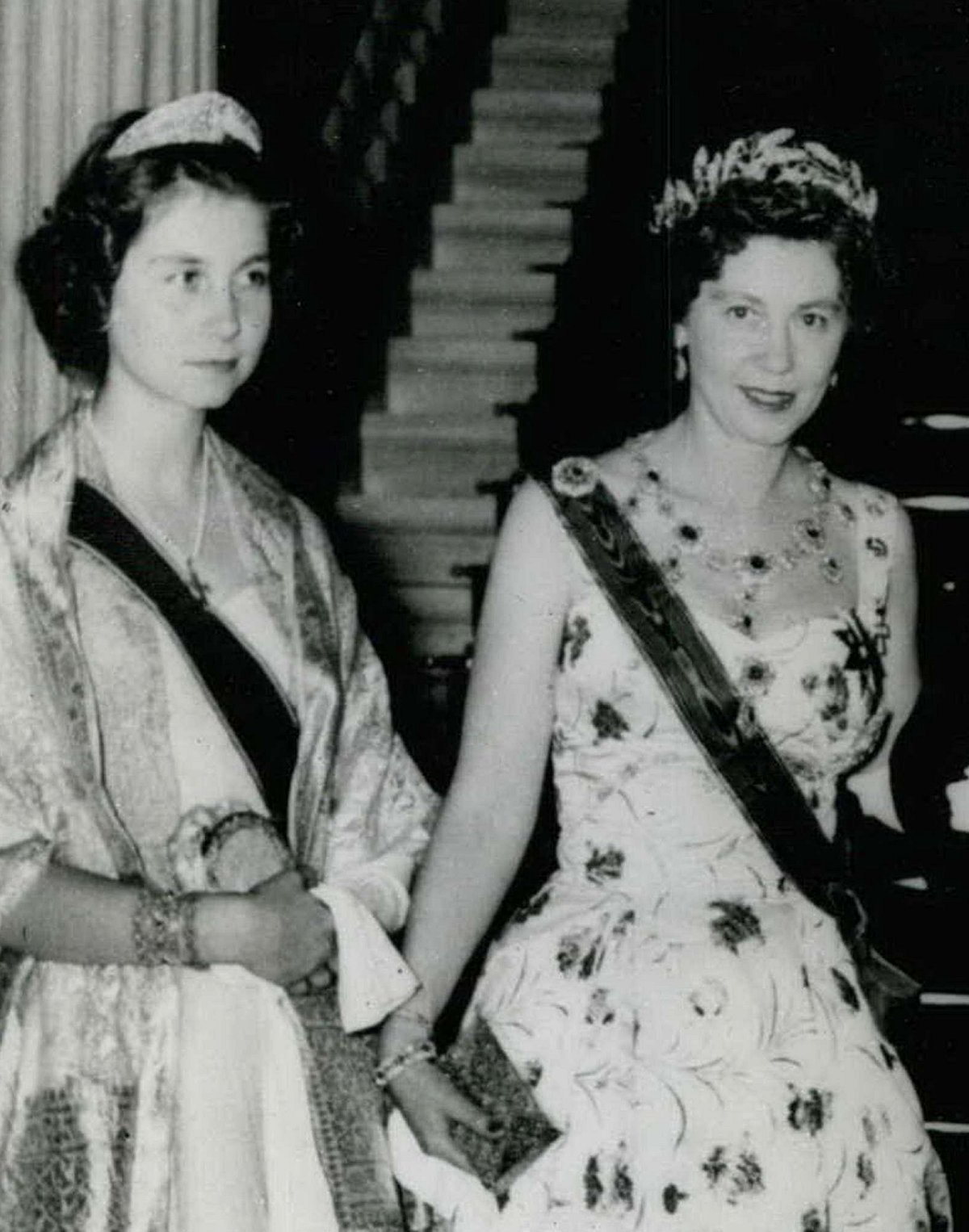
Paul and Friederike became King and Queen of the Hellenes on the death of his brother, King George II, in 1947. (The funeral and inauguration in Athens took place just as another member of the family, Prince Philip, was planning to announce his engagement to the future Queen Elizabeth II in London.) By this time, Friederike and Paul had three children of their own: Princess Sophia, Prince Constantine, and Princess Irene. The eldest, Sophia, would often accompany her parents on foreign trips and at diplomatic events over the years, and she frequently borrowed her grandmother’s small kokoshnik for those gala occasions. Above, seventeen-year-old Sophia wears the Prussian Tiara during a reception in Athens for President Heuss of West Germany in May 1956.
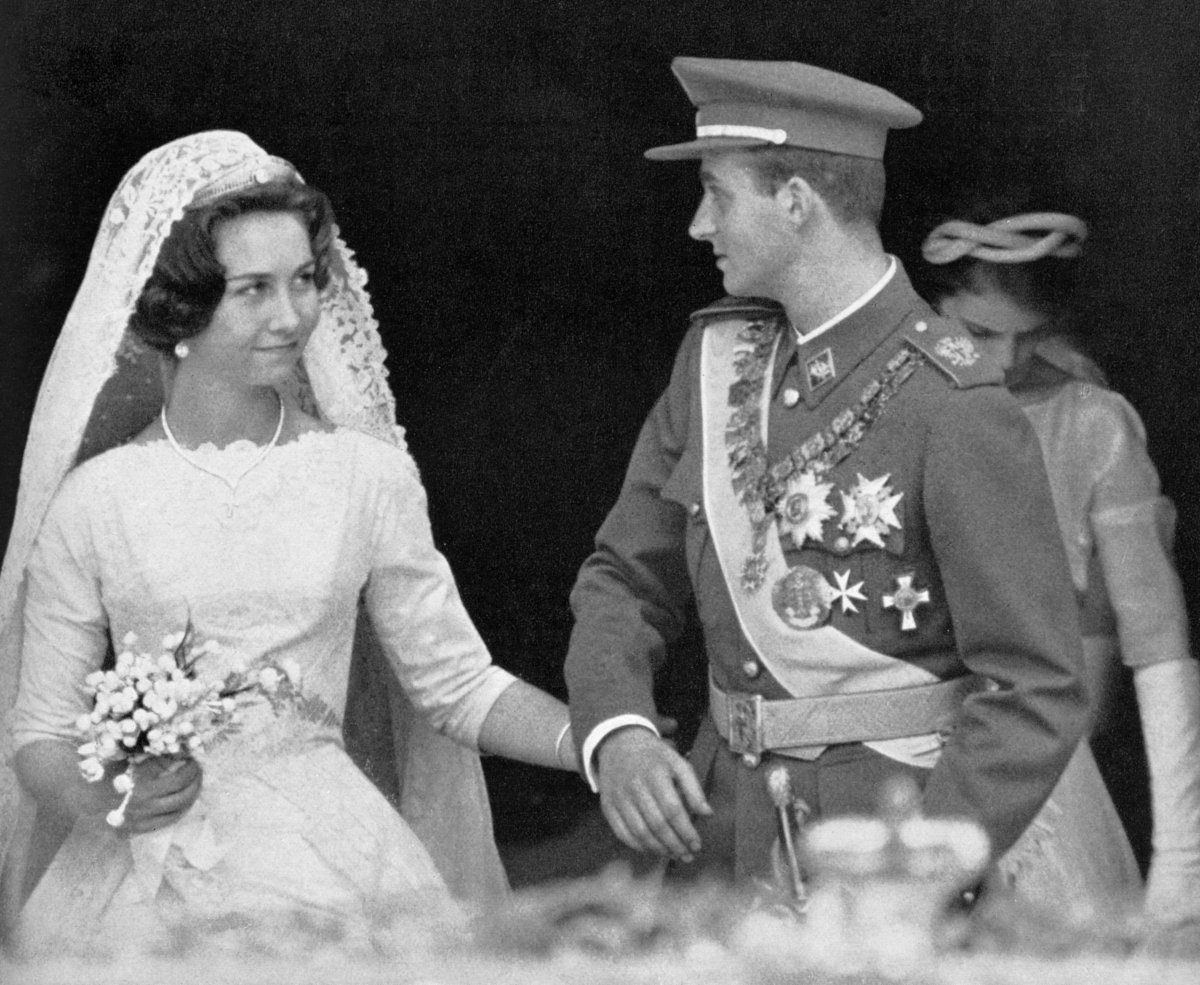
Six years later, Princess Sophia chose the Prussian Tiara to wear on her wedding day. In a trio of ceremonies in Athens, the Greek princess married Infante Juan Carlos, part of the exiled Spanish royal family, on May 14, 1962. Sophia (who soon changed her name to the Spanish spelling, Sofia) wore the tiara with the same antique lace veil that had been worn by her mother, Queen Friederike, at her own royal wedding in 1938.
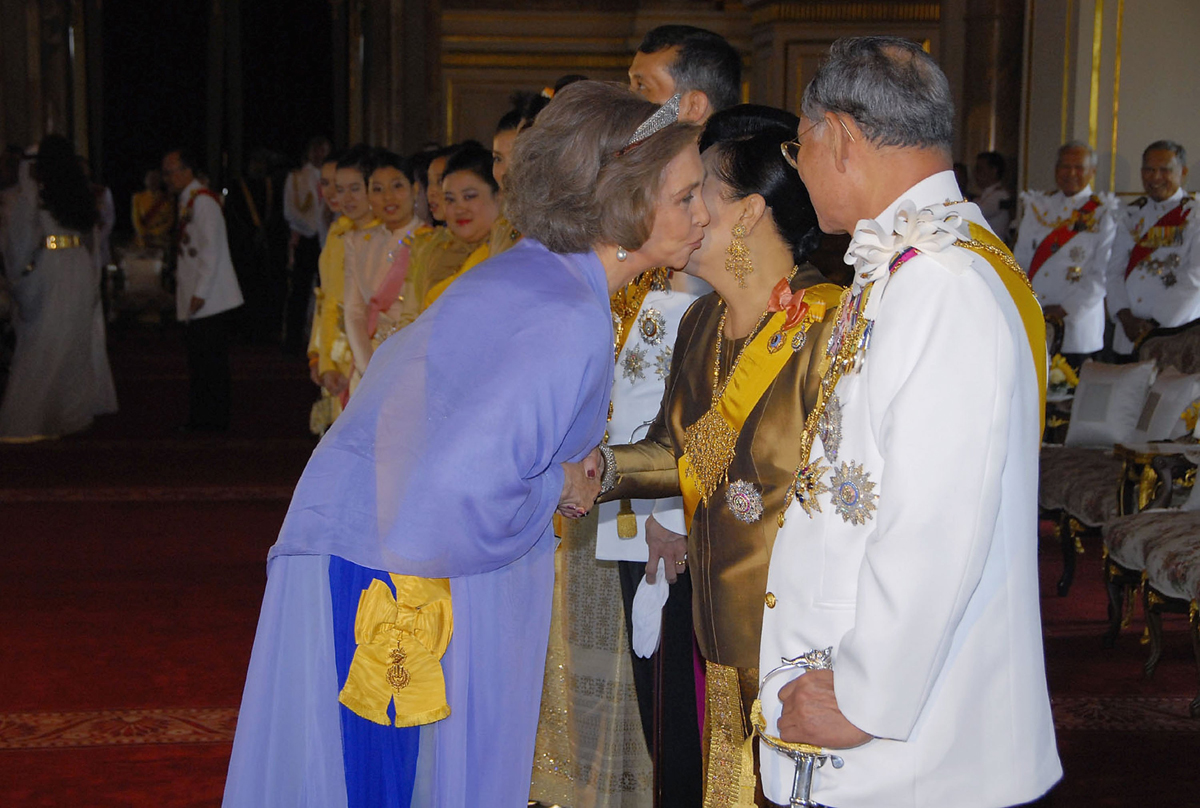
Sofia became Queen of Spain when the monarchy was restored in 1975. She wore the Prussian Tiara often in the early years of her marriage and her husband’s reign. Though she eventually favored the grander tiaras from the Spanish collection, she still occasionally made appearances in the Prussian Tiara. Above, she wears the petite jewel during the celebrations of the King of Thailand’s Diamond Jubilee in 2006.
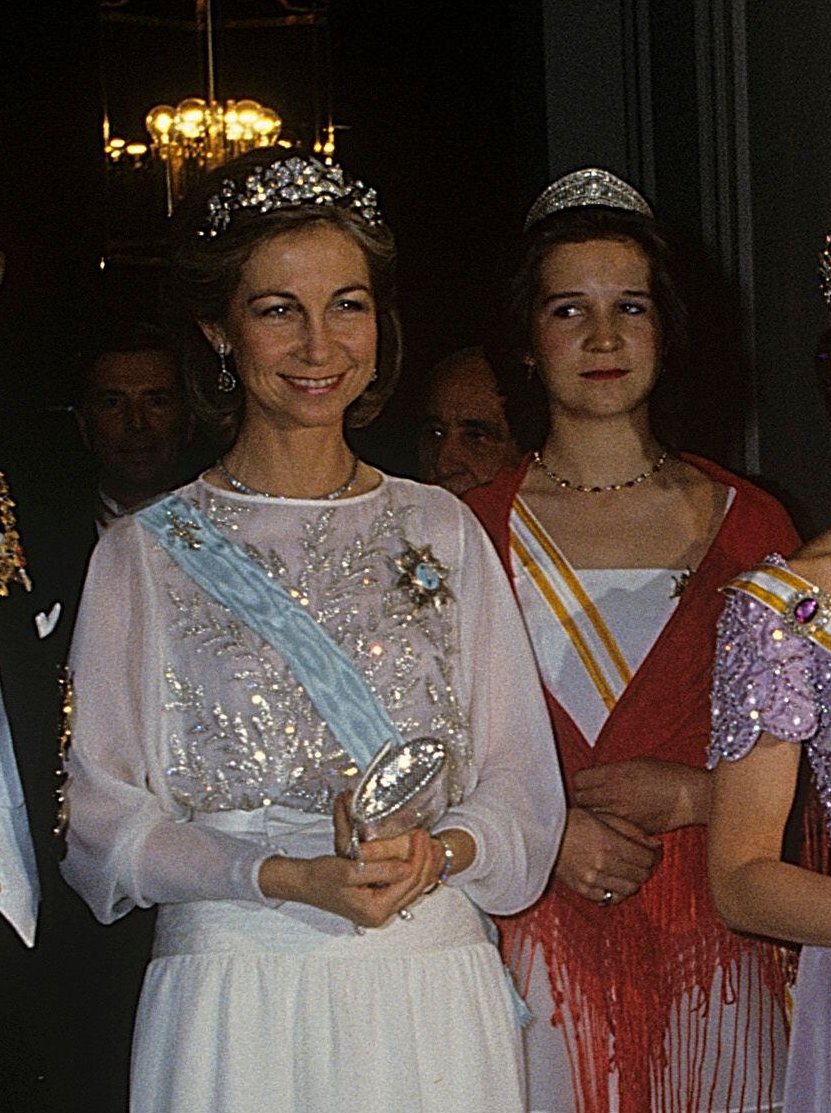
More often, though, she loaned the tiara to other members of her family, including her daughters. Infanta Elena of Spain particularly enjoyed wearing the tiara in the years before her own marriage. She dons the piece above during the Swedish state visit to Spain in 1983.
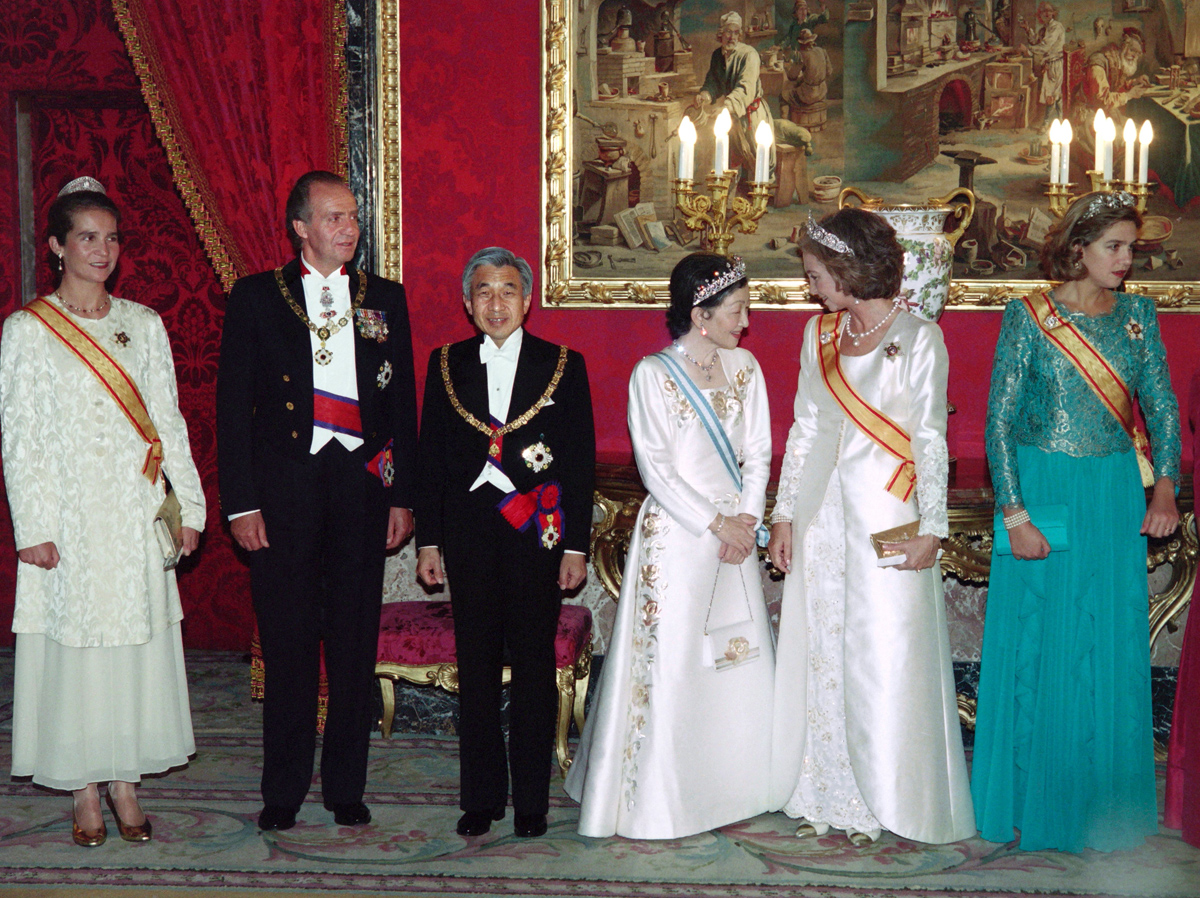
Elena also wears the tiara in this photograph, taken during a state banquet at the Royal Palace of Madrid during the visit from Emperor Akihito and Empress Michiko of Japan in October 1994.
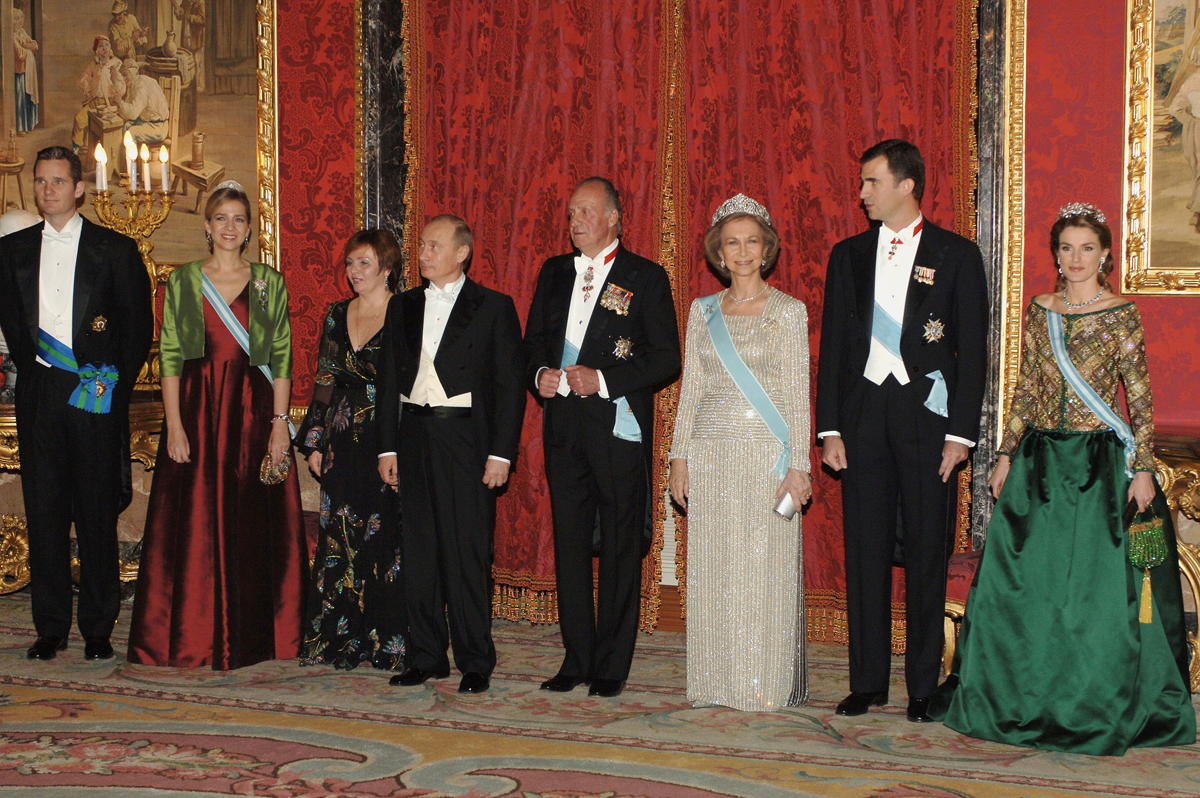
And here, Infanta Cristina of Spain wears the tiara during the Russian state visit to Spain in 2006.
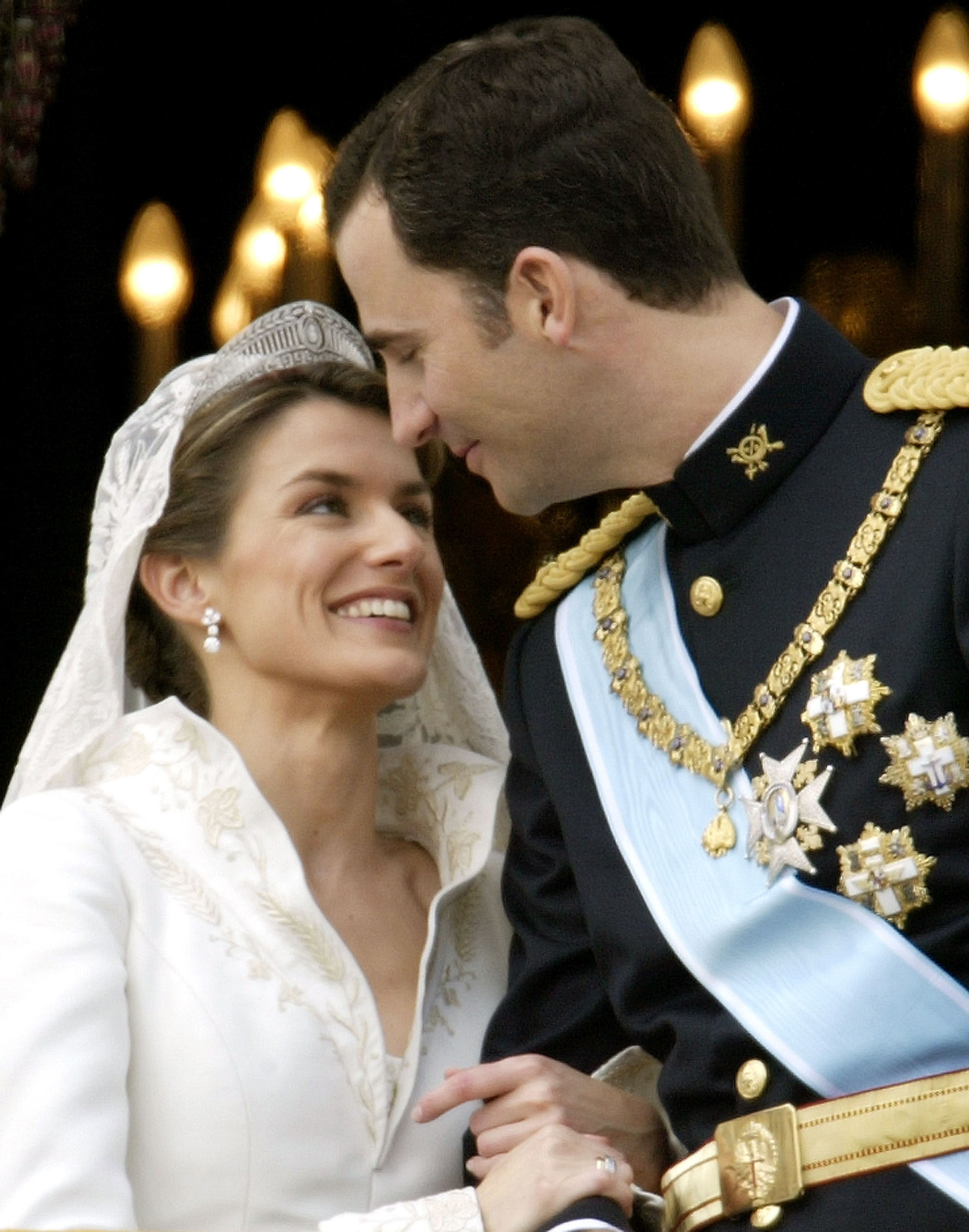
Over the past two decades, however, the primary wearer of the Prussian Tiara has been Queen Sofia’s daughter-in-law, Queen Letizia. Like her mother-in-law before her, Letizia wore the tiara for her royal wedding in May 2004.
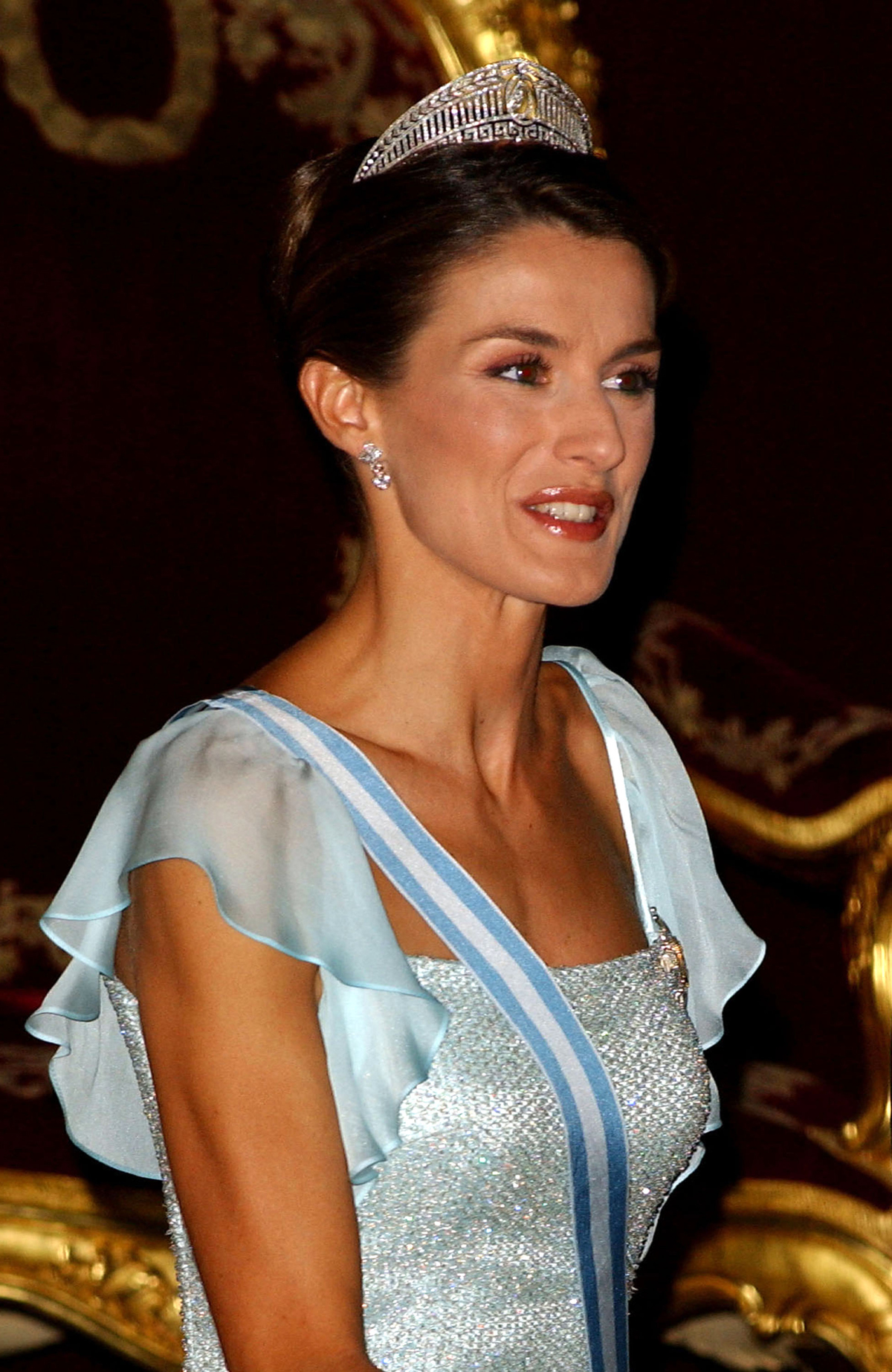
For years, the diamond jewel was Letizia’s primary tiara, worn for a whole range of state occasions. Here, she dons the tiara during a visit from the President of the Czech Republic in 2004, a few months after her wedding.
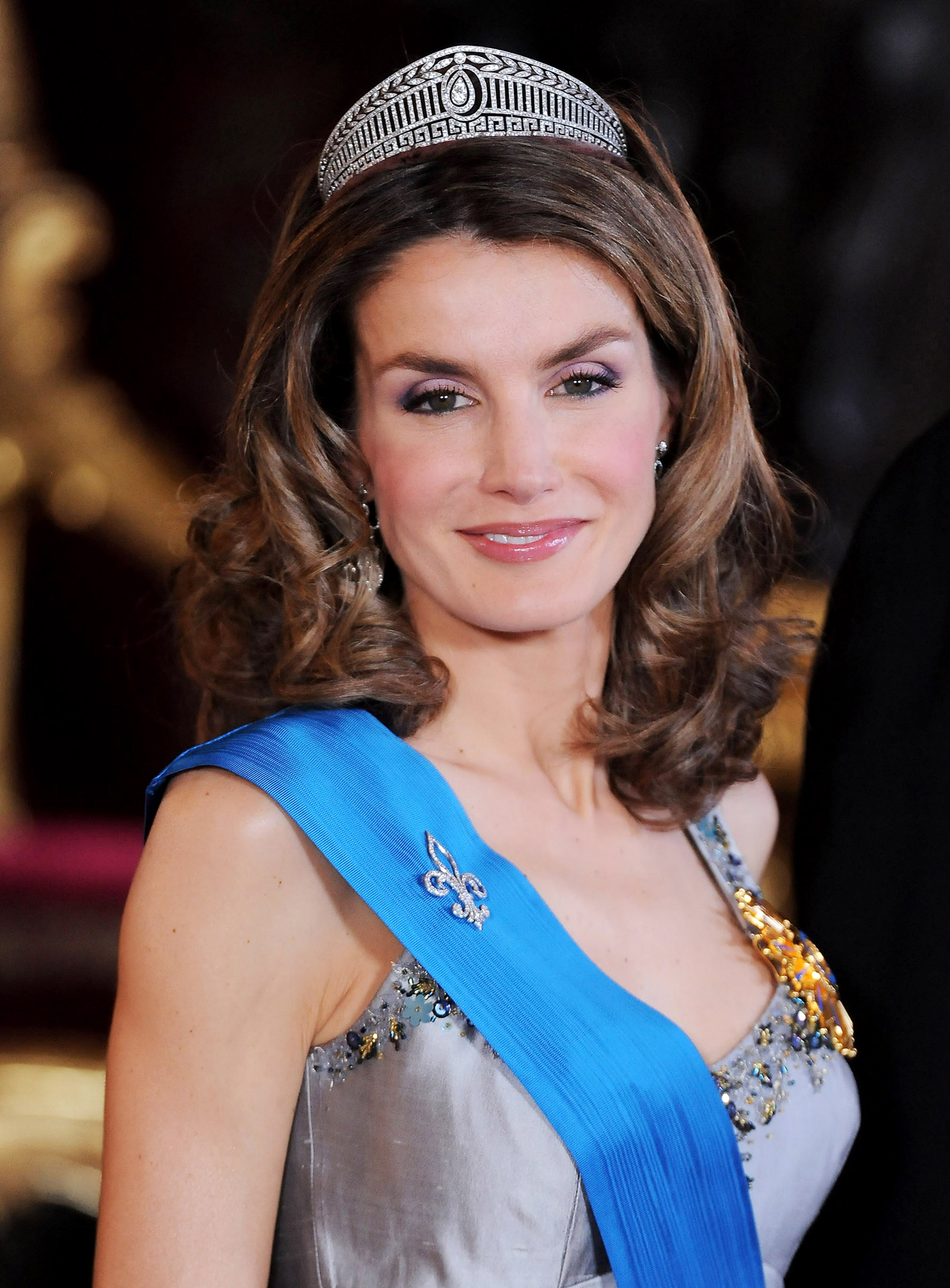
Like her mother-in-law before her, Letizia has largely set the tiara aside, now that she has access to the larger and more imposing jewels worn by Spanish queens. But I’m hopeful that she has the piece earmarked for a very important new wearer: her elder daughter, Princess Leonor.
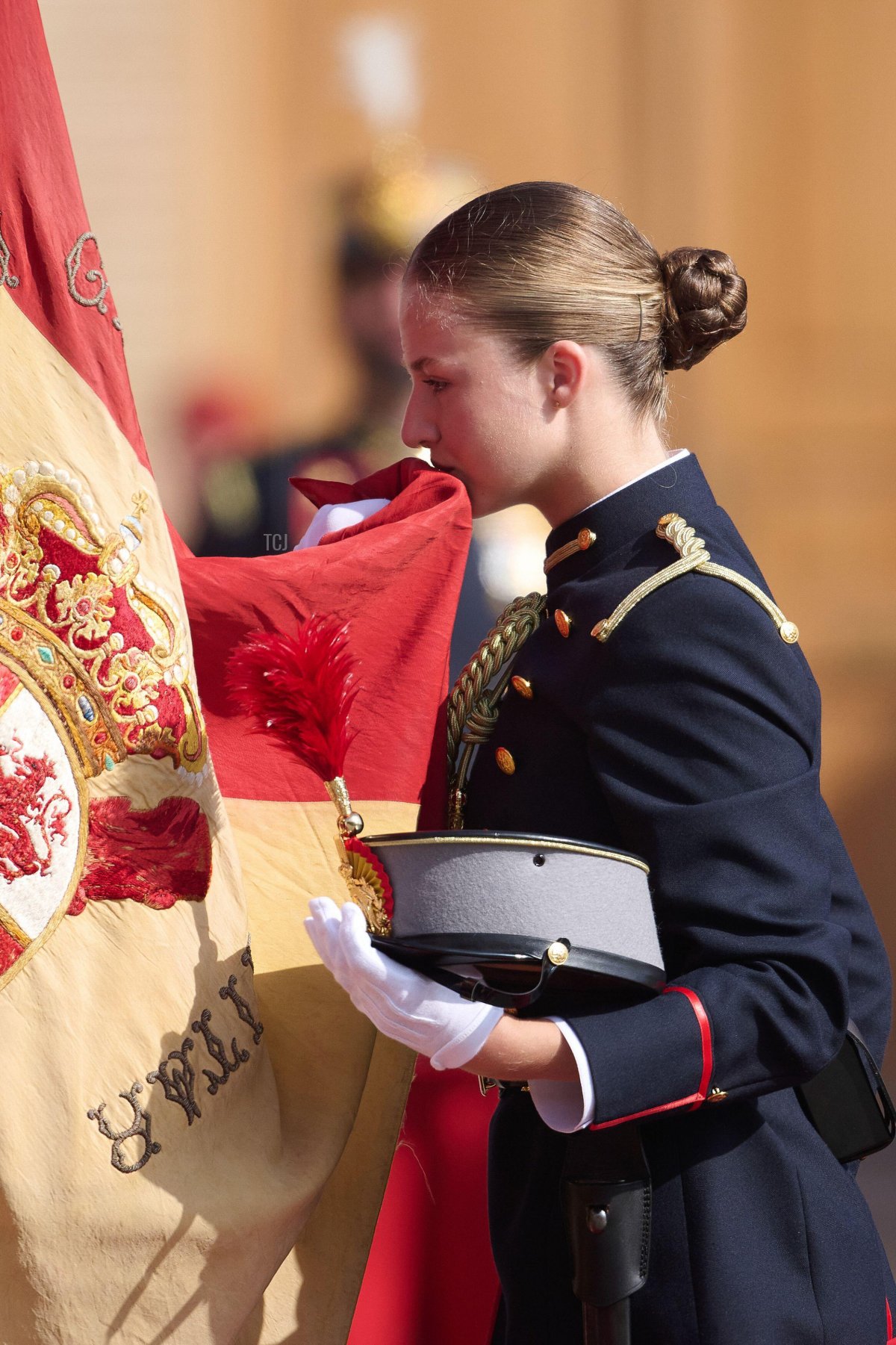
As a future Queen of Spain, Leonor will also one day have access to the grand tiaras and jewels now worn by her mother. But the Prussian Tiara would be such a fitting “first” piece for the princess. She would be, remarkably, a representative of the fifth generation of the family to use the piece as their very first diadem. It’s a fabulous example of the princess’s royal legacy, linking her to a Prussian princess who became Duchess of Brunswick, a Hanoverian princess who became Queen of the Hellenes, and a Greek princess and a Spanish commoner who both became Queens of Spain. I just can’t wait to see Leonor wear the tiara, more than a century after it was made for her great-great-grandmother.
Leave a Reply
You must be logged in to post a comment.